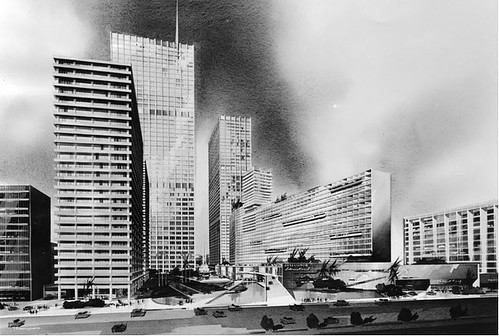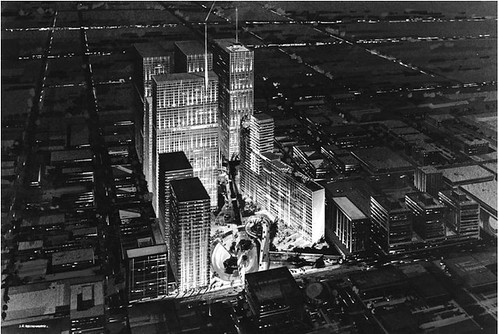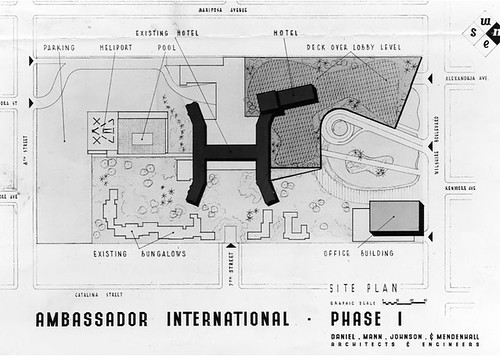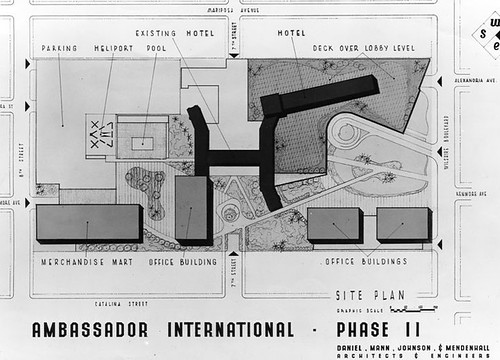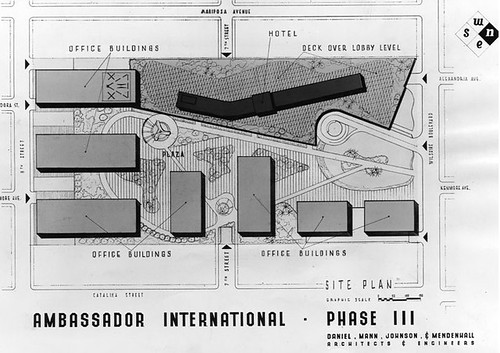Some movement on the Cocoanut Grove (well, what's left of it) preservation front: The L.A. Times writes that the Los Angeles Unified School District has agreed to temporarily halt demolition of the famed nightclub:
The Los Angeles Conservancy sought to halt the wrecking ball until a judge had time to rule on whether the district was breaking the law by tearing the club down...
In a second, related matter, the conservancy dropped its call for an injunction to bar the district from destroying items collected from the hotel's pantry, the site of the 1968 assassination of U.S. Sen. Robert F. Kennedy.
The district said the matter was moot, as it has no plans to destroy the items, including electrical fixtures.
Demolition is halted until at least February, when a hearing will discuss the conservancy's allegations.
The L.A. Conservancy has filed suit over the decision to tear down the Cocoanut Grove -- which originally was slated to be saved, even as the rest of the Ambassador Hotel was sadly torn down.
Adds the paper:
The district also quietly destroyed the pantry but saved fixtures, sections of the structure, and the ice machine, and 3-D imagery was taken of the room.
Those moves led to the current lawsuit, in which the conservancy alleges that the district hasn't proven that its only option is to tear down and replicate the club and that it improperly handled the pantry. The district said it discovered that the pantry would crumble if it were moved in one piece and that its method of preservation was better.
Meanwhile, Hensel Phelps has been contracted to build the middle school, high school, auditorium and other structures on the 24-acre site for $566 million.




